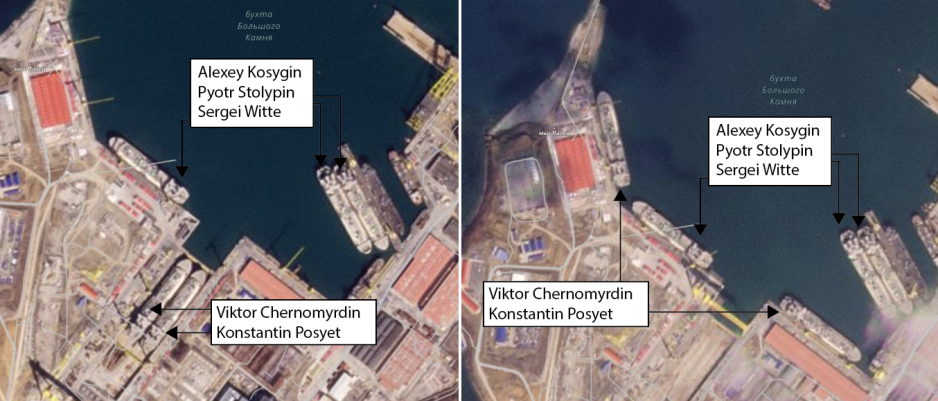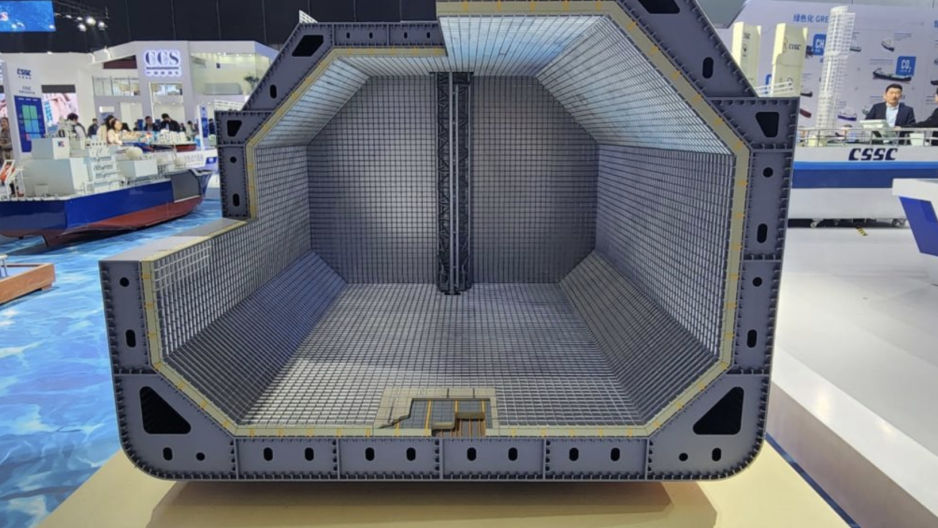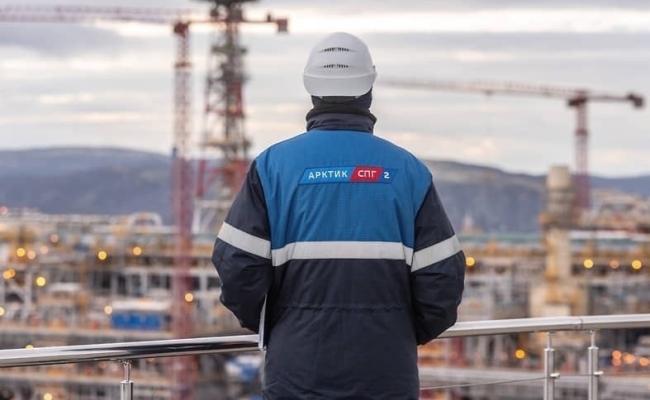Russia’s Zvezda Shipyard Launches Two Additional Arc7 LNG Carriers for Novatek’s Arctic LNG 2

Arc7 LNG carrier Aleksey Kosygin (background) launched at the Zvezda shipyard. (Source: Zvezda Shipbuilding Complex)
The launch of two more Arc7 LNG carriers provides a pathway for Novatek to secure partial shipping capacity for its Arctic LNG 2 project later this year. The use of conventional carriers during the summer months could also ease logistical constraints.
All five Arc7 LNG carriers currently under construction at the Zvezda shipyard in Russia’s Far East have now been launched. Satellite images indicate vessels Viktor Chernomyrdin and Konstantin Posyet leaving the drydock last week joining the first three carriers, Alexey Kosygin, Pyotr Stolypin and Sergei Witte.
Zvezda constructed the vessels in a now-canceled partnership with South Korean shipyard Samsung.
Their exact status, especially the completion of the internal membrane containing the liquefied gas, remains unclear.

Zvezda shipyard on March 27 (left) and April 2 (right) showing five Arc7 LNG carriers, with the final two launched from drydock. (Source: Planet)
French provider Gaztransport & Technigaz (GTT) departed from Russia in 2023 having completed work on two or possibly three Arc7 carriers. Zvezda may look to complete work on the remaining vessels without GTT’s help applying knowledge gained from the Technical Assistance and License Agreement it signed with the French company in 2020.
The Russian government has systematically worked to achieve import substitution of key technologies used in the oil and gas sectors. With respect to tanker membranes, Russian company Segezha Group has developed its own brand of “tanker plywood” used in the membrane-type insulation panels.
In 2022 Segezha’s product was certified by GTT for use in its Mark III membrane. The product has already found application in the Chinese shipbuilding market and could likely aid in the completion of the membrane in the remaining Arc7 vessels, industry experts speculate.
“Currently, there are no manufacturers of membrane cargo containment systems for LNG tankers on the Russian market. Therefore, all our products are sent abroad. However, we maintain close working contacts with Russian companies that plan to begin domestic production of membranes in the near future,” explained the company’s Vice President for Commerce Dmitry Beresnev last month.
“When a domestic manufacturer of such membrane systems appears on the market, we will be ready in the shortest possible time to offer them plywood elements that have already proven themselves on the global market for the corresponding insulating layers,” he continued.

A model demonstrating membrane technology using tanker plywood in an exhibition in China. (Source: Segezha Group)
In addition to the five vessels at Zvezda, six Arc7 carriers face uncertainty at South Korean Hanwha shipyard. U.S. sanctions have complicated the delivery of completed vessels to Japanese operator MOL or directly to Novatek.
Can Novatek secure enough capacity
Novatek previously stated that in order to deliver LNG to markets it requires one Arc7 carrier per one million tons of annual production. Arctic LNG 2 has a total production capacity of around 21 million tons per year split across three production lines, the first of which was launched in late 2023. But the company has yet to make a single delivery as it has been unable to procure any Arc7 vessels.
The service entry of the five Zvezda vessels – experts expect two to three vessels to be ready this year, with the remaining ones to follow in 2025 – provides a pathway for Novatek to begin deliveries from Train 1 this year.
In combination with conventional or low-ice class LNG carriers during the summer months it may be able to assemble sufficient shipping capacity to transport all the LNG produced by Train 1. Though it remains to be seen if the modified design following sanctions can reliably achieve nameplate capacity of 6.8 million tons per year.
But beyond Train 1 the shipping logistics look less favorable unless the six vessels tied up at Hanwha can also find their way into service with Arctic LNG 2.



